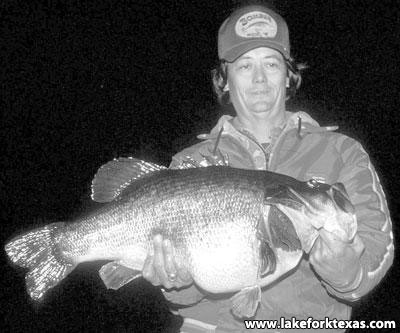
It's a fishing story unlike any other: How a mega-bass became a megastar and how that fostered the idea of catch-and-release fishing.

| YouTube screen grab |
In a YouTube video released by Texas Parks and Wildlife Department, "The Legend of Ethel" tells the story of how the 17-pound largemouth put Lake Fork in Texas on the map as a Mecca for big bass and created a program that fostered the idea of catch-and-release fishing.
After a cold front had blown through in November 1986, Lake Fork fishing guide Mark Stevenson casually trolled down the side of a creek when he made one pitch — and then "boom."
In the video, Stevenson recalled when he was asked what he was going to name her. "It just popped in my head — Ethel. ... She was as big around as she was long."
What Stevenson — and Ethel — didn't know was how important their hook-up would become.
The sheer size — 27.5 inches long with a 24.5-inch girth — made Ethel the perfect "poster fish" for the ShareLunker program, which, according to the ShareLunker website, had been taking shape since the '50s when Texas first started breeding bass in fisheries to help improve growth and maximize size potential.
 |
| Texas angler Mark Stevenson with Ethel, who weighed 17 pounds, measured 27.5 inches long and 24.5 inches around. Photo via lakeforktexas.com |
Ethel became the first official bass entered into the program that continues today, asking anglers to donate bass to the Texas Parks and Wildlife Department. There, the bass will have genetic tests ran; they'll be tagged; and with some, will be selected for breeding before being released back into the lakes by the original angler to spawn more trophy bass.
But Ethel didn't return to Lake Fork. Instead, she was taken to the Bass Pro Shops flagship store in Springfield, MO., where millions were able to visit and awe at her size. She became so popular that, when she died in 1994 at the age of 19, more than 1,000 people attending her funeral.
Her impact on catch-and-release programs in Texas gave her a legacy no other bass has had since.
In the video, Bass Pro Shops founder and CEO Johnny Morris said it best: "She was a spotlight to showcase the sport of bass fishing. That fish was just the most shining example of what can happen if you really manage your resources properly and pay attention and invest in the future."
- 11298 views

